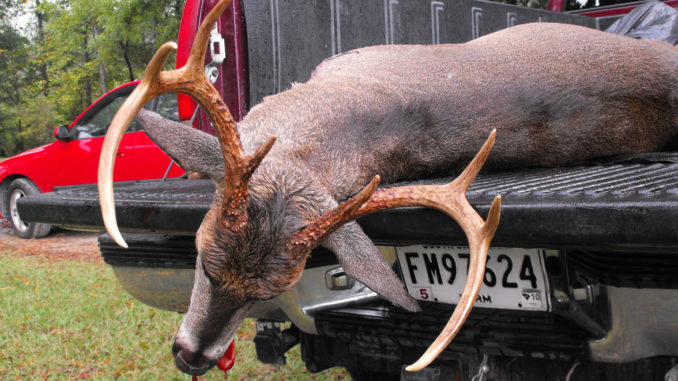
Hunters shouldn’t change their deer plans
By the way people continue to move to the Carolinas, the secret is definitely out! The flood gates are open, just like the Texas-Mexico border. The South has the perfect climate, best economy, and of course, the best neighbors — few other communities in the country can compare.
But the population growth is directly affecting the available wildlife habitat and hunters’ management decisions in a counterproductive way. Land prices are steadily rising in developable areas, with new shopping centers and subdivisions sprouting up on every corner. Large property owners are getting older and cashing in on the high land prices while they can, and wildlife habitat is suffering.
As soon as the trees come down and the asphalt sets, deer and other wildlife feel the squeeze. Deer have fewer places to live and hunters fewer places to hunt. Hunting tracts are steadily shrinking, and the battle for hunting leases increases, with higher lease costs and less availability. In some cases, the presence on only small hunting tracts with lots of hunters around is having a negative effect on the quality of the herd.
It’s is not only competition for hunting leases, but competition for the deer themselves. Some hunters are feeling the pressure to go ahead and pull the trigger on a buck because they think the buck will be shot by somebody else across the hedgerow. But a dead 2 ½-year-old buck will never make it to maturity. Any chance this deer had to put on mass and pass on good genetics to the next generation is finished. If hunters want the opportunity to harvest a mature animal on a 10,000-acre property or a 10-acre property, these deer must be given the chance to grow. Age is critical for growing trophy bucks.
Bucks that win all of the awards at the deer shows are products of a simple formula that includes good genetics, prime nutrition and adequate age. Hunters have a pivotal role in this formula by the animals they harvest. Hunters can try to select genetic traits and supplement the deer’s diet, but the harvest plays the starring role in this equation.
Hunters affect the quantity and quality of their deer herds primarily through deer harvests. A deer with premium genetics and proper nutrition can grow a massive set of headgear if hunters can allow them to reach maturity. Typically, a mature buck is at least 4 1/2 years old, but this is a small proportion of the population. If hunters knew how few bucks older than five are still roaming the woods, their effort might drop. But hunters as a whole pull the trigger on these deer long before they even get close to maturity. Premature buck harvests are counterproductive on any sized tract.
In order to grow a large buck, they must grow to maturity. In the Carolinas, the liberal deer harvest has a negative effect on the quality of the herd overall.
According to Charles Ruth, deer-project supervisor for the S.C. Department of Natural Resources, one out of 800 bucks killed in South Carolina each year is eligible for the record book with a 125 score or better. He said a hunter is more likely to get struck by lightning than kill a Boone and Crockett Club buck in the Palmetto State.
While North Carolina and South Carolina deer may not have the same genetic possibilities as some of the Midwestern states, many of the big, high-scoring bucks that come out of Ohio, Illinois and Kansas are solid, mature animals that are a direct result of relatively short seasons and limited buck tags. These states promote older age-classes through limited harvest opportunities. If only a small number of bucks is harvested, more bucks will progress to older age-classes by default.
With the exception of a few strict meat hunters out there, most hunters are looking for a bigger and better buck before they send a round downrange. Today’s management trends are headed in the right direction, because more and more hunters are looking for a mature deer with a large set of headgear. But liberal buck harvest opportunities are still a counterproductive way to improve the quality of the herd.
On large properties where trophy management principles are a way of life, subordinate bucks with potential to become high-scoring animals are always free to walk. Regardless of how small the tract is or how close a hunter is to his property line, hunters need to stick to their management-plan goals and allow the smaller, immature bucks to grow. In time, the big boys will show up to reward hunters with their hard work.




Be the first to comment